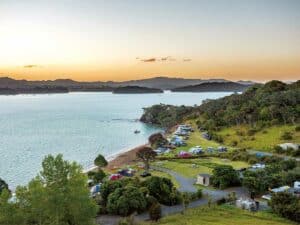Owner of Road Life RV in Tauranga, Rhys Hunter, shares his top five things to consider when buying a new motorhome or campervan.
What's the intended use?
How often will you use your RV and where do you plan to take it? If you’re not using it often, then it’s likely you’ll end up concluding that you need a larger motorhome than first thought. It’s important to choose an RV that you will feel comfortable and relaxed in as well as being suitable for the conditions you intend to drive it in.
Do you want to go freedom camping in the bush or stay in the city, hooked up to power? Do you need the motorhome to be completely self-sufficient in regards to power for lighting and accessory systems?
Which RV layout suits your lifestyle?
Do you enjoy socialising with friends and family in your motorhome? Do you want a permanent bed, or would you prefer the space-saving option of a drop-down bed? Do you want a separate shower and toilet or will you accept a combination unit to gain usable space elsewhere? It’s a great idea to make a list of features you want and the ones that are negotiable. Like buying a home, there will usually be small compromises required.
Do you need front/rear or four-wheel drive?
Where do you want to take your motorhome? Will you be going off the beaten track, staying in DOC camps, where the grass can be slippery, soft, and wet, or will you stick to roads, paved areas, and driveways?
What's the payload?
How much weight can you legally carry in your motorhome? Does the GVM (Gross Vehicle Mass)—compared to its unladen mass—allow you to take everything you need with you?
Don’t forget payload includes the weight of the driver, passengers, fuel, water, waste, and then your belongings. It’s illegal to travel over the GVM rating. Will you be adding weight by towing a trailer or boat? If so, what is the tow rating, and can a tow bar be fitted?
Construction of the RV
It’s important to look beyond a flashy interior to the ‘bones’ of an RV. What is the expected lifespan of the build, where was it made, and how easy is it to repair if damage does occur? Is it built strong with good ground clearance for the New Zealand touring environment? Can you get back-up parts and service for the supplied equipment? How is the cabinetry attached to the walls and is there anything in the wall to retain the cabinetry?
Is the floor adequately supported to prevent flex of the motorhome body and deal with our harsh New Zealand road conditions? What is the length of the warranty on the construction and, more importantly, what are the experiences of owners who’ve had product for a few years? Will the wall system stand up to having a bike rack or storage locker attached to it?






